For those of you who are new to the blog, there is an archive on the right, with entries and pictures back to 2007. With time you can review all the contests during those 14 years.
This is a picture contest. It is not just about which flower you like most. (You can vote that way if you want, and many do.) When I select the pictures for the contest I look at many things. Good color is a big one. Combinations of color are important. Composition is important. Background counts.
#1 White Iceland Poppy
(April 3, 2021)
#2 Fall Crocus
(September 5, 2021)
This is a fall blooming crocus, probably "colchicum giant". I have had these plants for a long time.
I like fall crocuses for at least 3 reasons: (1) So many people have never heard of them. I really like to have people see a plant or a flower they have never seen before. (2) They bloom in the fall, which is when you are looking for color. (3) You can plant them in the summer and they will bloom that same fall.
There are two types of these fall gems. One group is in the genus colchicum. The other is in the group...wait for it...crocus.
They both look like what we all think of as crocuses.
The colchicum are their own genus. They are listed as being in the lily family. The regular old fall crocuses are in the iris family, like the spring crocuses.
Once noticeable difference is that colchicum has large non blooming foliage, which grows early in the spring. Then the flowers come up without leaves in the fall. Anyone think "naked ladies?" Those are lycoris and indeed are cousins to the colchicum.
And of course colchicums have 3 styles and 6 stamens, while crocuses have 1 style and 3 stamens. What?
OK- let me give you some flower terms:
stamen and pistil- stamen is the part that produces pollen. Pistil is the part connected to the seed producing part.
Then what is "style"?
Well, stigma and style are parts of the pistil. The stigma is the knob on the end of the pistil.The style is the long tube that takes the pollen to the ovary. There is a picture of the flower parts of 2 lilies in the bonus section.
This link will take you to a reasonably clear explanation of the difference between colchicum and fall crocuses.
#4 Blue Camassia
(May 8, 2021)
Welcome this lovely blue flower to the picture contest. This is its first appearance. Most people, even gardeners, have never heard of it.
Camassia is a spring bulb that unlike most of the other bulbs is native to North America.
I have grown it for 10-20 years. At this point I have 4-5 nice big clumps out there in the middle of the back yard.
It is rather late in the season of spring bulbs. The blue variety, as shown in this picture, bloomed in early May. The almost white variety (in the bonus section) was maybe two weeks later.
It is its own genus and is in the asparagus family.
Called quamash, it was cultivated for food by indigenous people in the Pacific northwest. You eat the bulb, which is described as being like a sweet potato only sweeter.
The foliage, like most other spring bulbs, disappears by early summer, leaving room for annuals.
#5 Yellow calla lily
(September 15, 2021)
I have gotten excited about calla lilies in 2021. I grew them about 20 years ago. They are bulbs like dahlias and cannas. That means that in that in Iowa you have to dig them up in the fall. They would rot if left in the ground to freeze. They get stored in a dark place for the winter. Then you plant them in the spring. You then get these lovely splashes of color.
What I did this year was plant them staggered over time. They will bloom maybe 6-8 weeks after planting. So I planted some every month. Some I put in the ground right away. Some I waited to plant until early August. Those bloomed in September, like the one in the picture.
Keeping a bulb dormant however is not always that easy. I suppose if you have a cooler that would be help. My "cooler" is under the basement stairs. The bulbs stay there with the amaryllis. I need to check every few weeks after the first of the year. Even in the dark sometimes the amaryllis will start to sprout. When that happens there is no stopping them.
A few facts about calla lilies:
(1) The name- The genus is Zantedeschia. They are from South Africa. There are just so many plants from there.
(2) I remember seeing big white ones growing along the highway north of San Francisco when we visited 20 years ago.
(3) The outside of what we think of as the flower is called a spathe. Think of it as a petal. The actual flowers are located on the spadix, which is that little thing in the middle looking a little like a caterpillar crawling out. The stamens and pistils are both located on the spadix. (Stamens produce the pollen.) Don't you feel smarter already? I did say you could skip this educational part.
(4) Georgia O'Keeffe is known for her depictions of calla lilies
https://www.philamuseum.org/collection/object/83649
(5) Here is wikipedia
https://en.wikipedia.org/wiki/Zantedeschia
------------------------
There you have it for the first week, Week #1. Where will we all be at when we get to Week #10?
In addition to your vote I really do like to hear back from you. Tell me what you like in the picture you chose. Sometimes this is not just a celebration of flowers but it can be about what you find attractive in a picture. Maybe it is the color. Perhaps it is the name. Daylilies have some wonderful names, mostly because there are so many of them out there.
If you want an extra challenge, rank order the five contestants and then tell me what you think that order will be.
Bonus Coverage
Here are the Iceland poppies on February 20, 2021.The poppy picture that gave us contestant #1 provides an example of what there is to like in a picture.
Here are different versions of the same picture, cropped differently.
The one in the lower right is the one I picked for the contest. I find it interesting to think about how the picture changes if you add or subtract the dark background. Or for that matter if you extend the stem.
Flower parts
This is a closeup of daylily Ruby Spider. It has a really long pistil and a lot of stamen. (Would a single stamen be a "staman?")
Camassia pictures
The first 3 pictures are from May 4.
More daylilies and Tiger Kittens


Right Now
Orchids start to bloom when they come inside. This certainly gives a lift as the great dark descends.
This is orchid Coelogyne viscosa. It will reliably blooms for the next month.
I divided the plant a year ago. Now I have 5 plants.
This next picture is the blooming cattleya in the living room. It has been blooming for three weeks.

Julia's Recipe
Sheet pan roasted mushrooms and spinach
I like mushrooms and spinach and easy, and this recipe features all three. This recipe is from the NYTimes, and I only tinkered with proportions. It is a no-fuss side dish with baked chicken or fish or steak - any kind of simply prepared protein.
The ingredients:
And here it is. It needed more salt and pepper, not surprisingly. This is tasty, easy and a nice companion to the roasted chicken thighs (which we baked in the other oven as it bakes at 375 degrees, not 425 - the advantage of double-hung wall ovens).
The ingredient amounts at the top of this post work for 2 or 3 people. It is easy to double, which could take a little more oven time.
Odds and Ends
Lumens - what are they and why do I care? I have discovered LED lights. I grow plants inside during the inside time. Some plants will go dormant. Those are so appreciated. But some want light and that is where LED's are relevant. I have several grow light setups. One is a professional one from 20 years ago. It still functions, with new ballasts from maybe 15 years ago. The other setup is in the basement. It was built for me even further back in time. It has used florescent bulbs of one variety or another. The ballasts are getting old, and are being replaced with...LEDs. They are listed as have so many lumens. So what is the difference between 7000 and 10000? There is only so much information one can process at any one time.
Leaf blowers- I do not use them, even as I must confess that they were used on the garden in the past. (I had a helper who liked his tools.) I dislike them for a variety of reasons, most having to do with how they are loud and used at times for such long periods of time. I do understand their attraction as I sometimes struggle to get they leaves out of garden beds with plant labels throughout. There ought to be a named emotion for dislike- but-find-attractive.
I suppose I feel the same way about weed-whackers.
How far away is Spring?
One week later, on March 6, 2021, there was the first crocus.
When will the first crocus be in 2022?
So there you have Week #1.
Hello to viewers who have been with the contest since the beginning, many years ago.
Hello to everyone new.
I hope you enjoy my meanderings through pictures and memories.
Gardening is sort of an escape. I garden to maintain a balance with my work. (I am a full-time lawyer who represents people who have done bad things.) Moreover there is a big bad world out there, with much that is hard to understand.
But gardening is so much more than an escape. It connects us to a part of the world that is not on the front pages of most newspapers. It also connects us with each other. It is beauty, and balance, and chaos, and destruction, and perhaps most of all, it is new beginnings.
Be safe. Spring is coming.
Philip


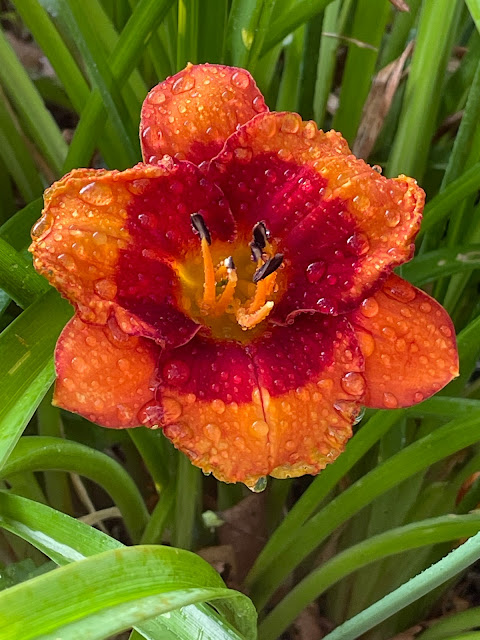






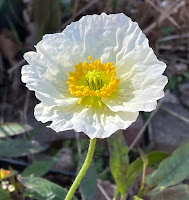















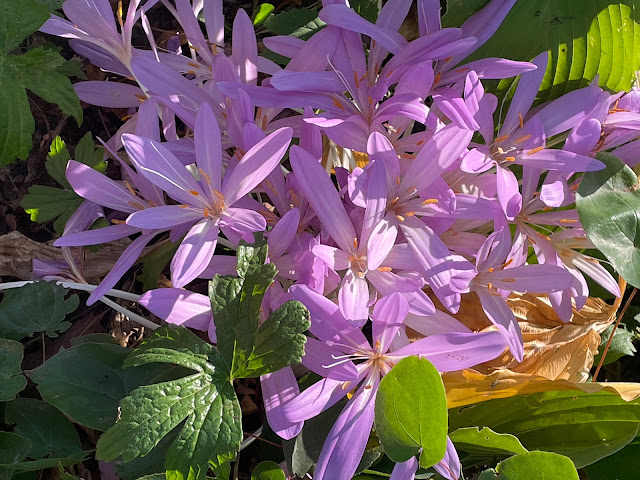

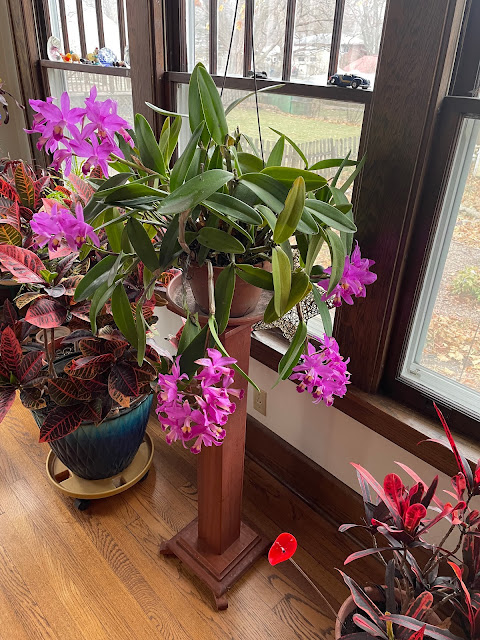


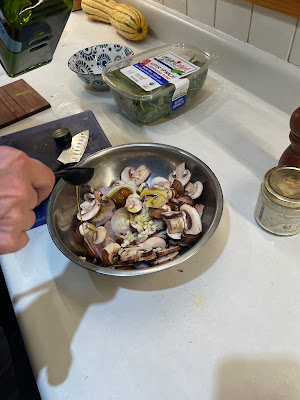





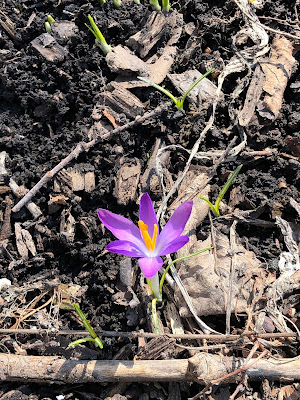
4 comments:
Great to have the contest back! I’m guessing this will be a win for the white poppy, as he lighting and background conspire to give te flower its close-up (think Gloria Swanson in Sunset Boulevard).
So here is my prediction: my guess is that a close-up of one of the callas with similar lighting would have worked wonders.
1, 3, 4, 5, 2
My prediction David, without looking at any results, would be 14532. I say that as daylilies have never done well in the contest.
Looks like a blowout for the poppy. Reminds me of a bedsheet on a clothesline, rippling in the breeze.
I can contribute a comment about your comment: "French fries do not come from France. So why the name?"
In cookery, "french" and "frenched" and "frenching" (sometimes upper- and sometimes lowercased) refer to methods of cutting. "French cut" veggies are cut in thin strips, and "frenched" meat is partially cut from the bone before cooking (a cook might "french a saddle of mutton"). I haven't found any explanation for why these methods are called "french." These terms are mostly used in the US. The term "french fries" originated here, "french fried potatoes" in England. I have no idea whether these types of food prep methods were invented in France.
(almost) every week, I see a flower that makes me think, I should get some! I could plant that! then I forget what it is, and remember that I have a batch of daffodil bulbs (from Lowes or someplace like that) that I didn't get planted this fall and I remain flower-deprived. I do have some hellebores doing nicely (under the walnut trees), still green, inspired by yours. (the hellebores by the front door are not doing as well, but hanging in).
happy to have the contest back, and happy to see Julia's recipes each week.
Post a Comment